
Fall Foliage Tracker
Join us as fall color, the harbinger of cold weather, sweeps across NYBG! The rich red hues of sweetgums, golden glimmer of ginkgoes, and cheerful oranges of maples can be found across the entire 250 acres of the Garden, but are best featured in the Thain Family Forest, Steinhardt Maple Collection, Native Plant Garden, Rock Garden, and Maureen K. Chilton Azalea Garden.
Fall color varies quite a bit from year to year, and is largely controlled by available water from precipitation and changes in temperature. The Northeast is lucky enough to have a beautiful display of autumn foliage every year, but the absolute best color comes from warm, sunny days followed by cool nights.
The familiar hues of autumn occur in deciduous trees as chemical signals tell them to prepare for winter. The trees transport all of their sugars and other resources from the leaves to storage in the roots. As the green chlorophyll breaks down, it reveals the yellow and orange pigments present in those leaves. In addition, some trees will also start to make pigments, called anthocyanins, for protection from UV radiation during the last little period of photosynthesis. These are what give leaves their red—or even purple—colors.
Real-Time Foliage Tracker
Real-time bloom tracking
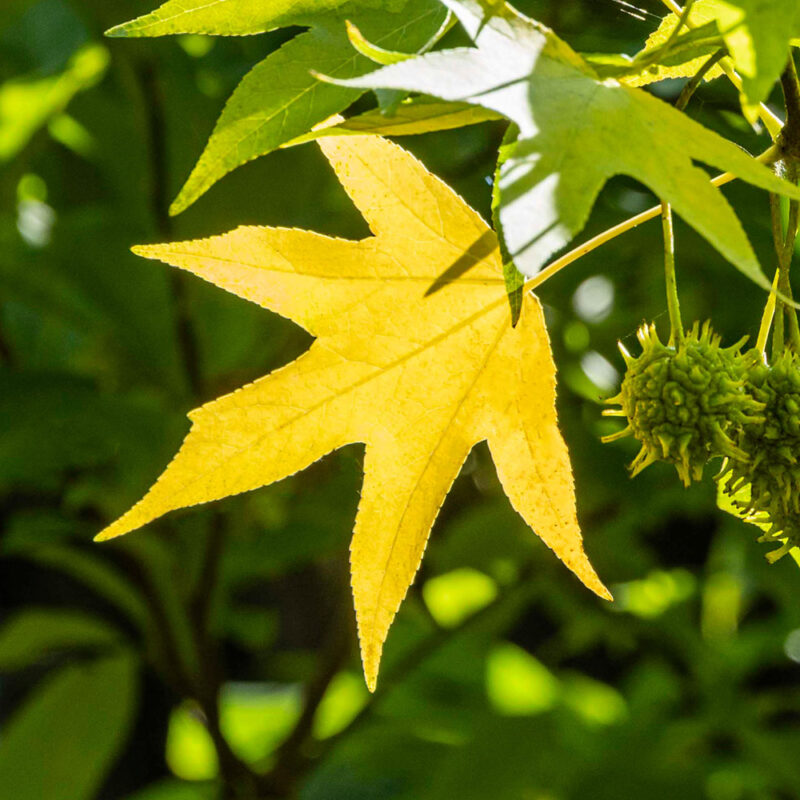
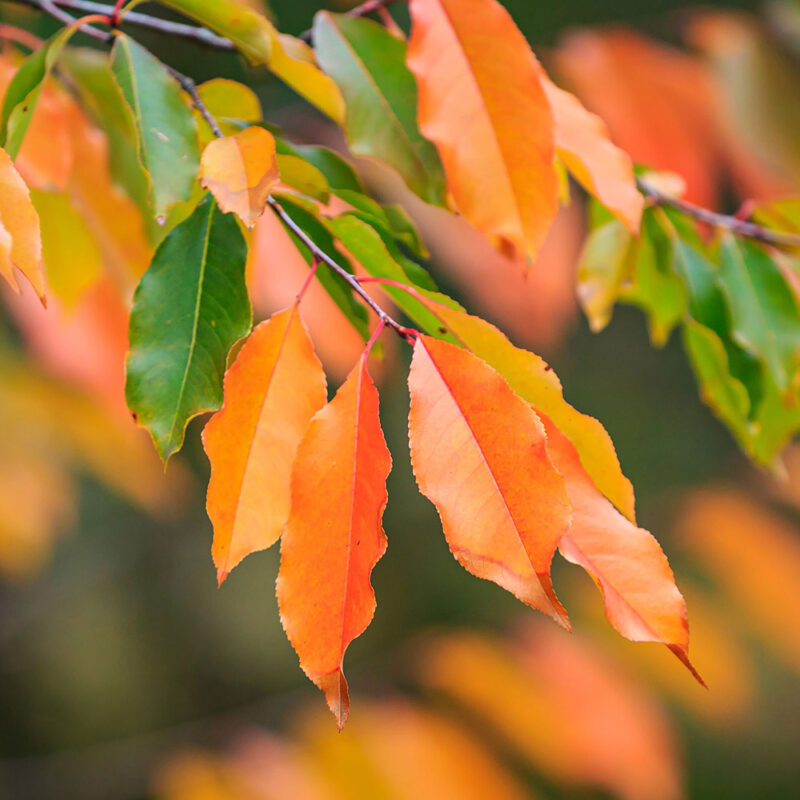
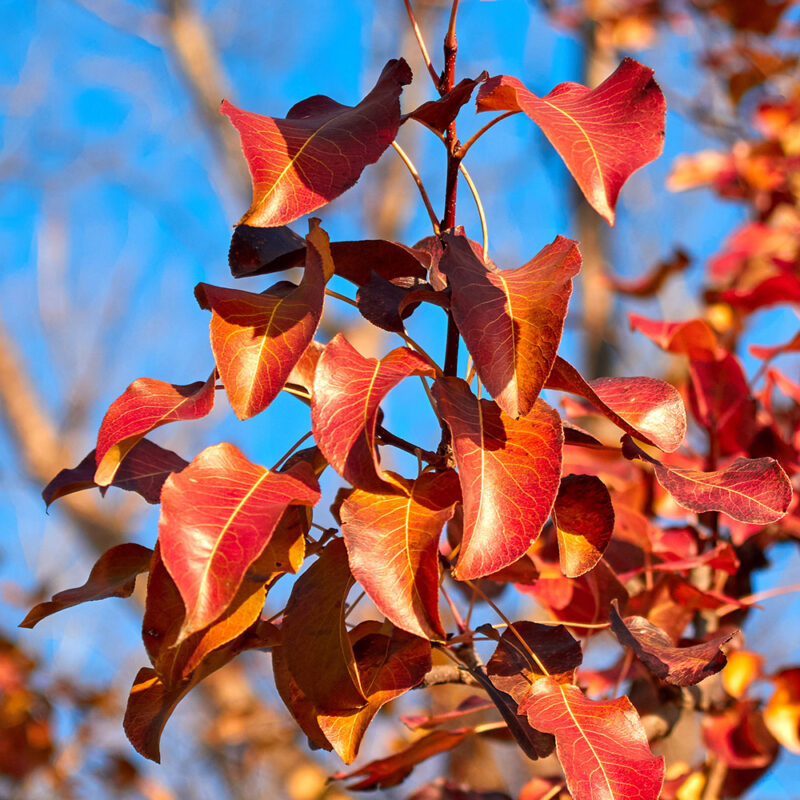
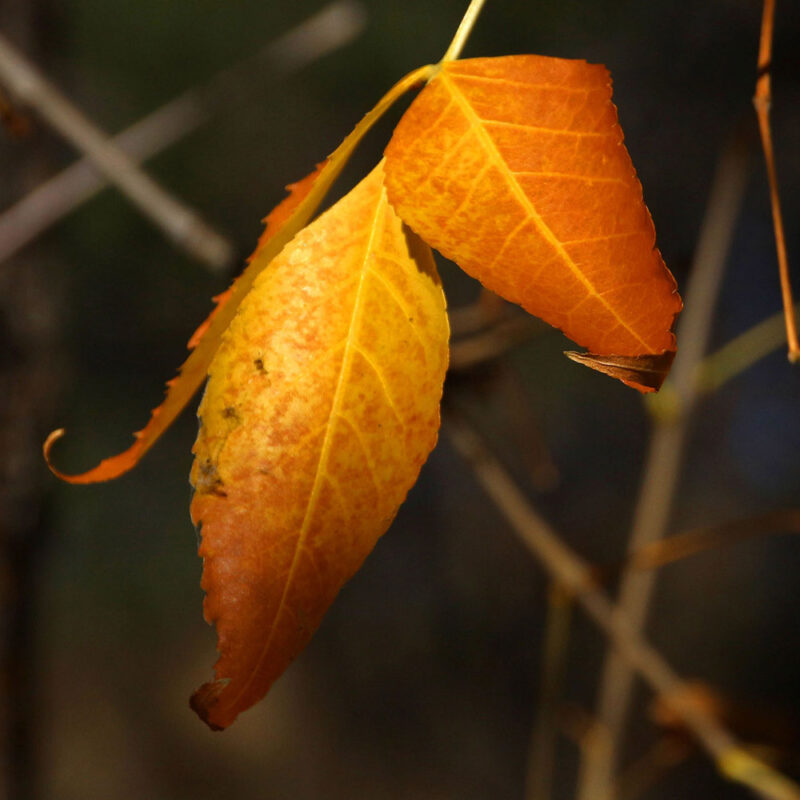
Additional Information
Early Season Trees
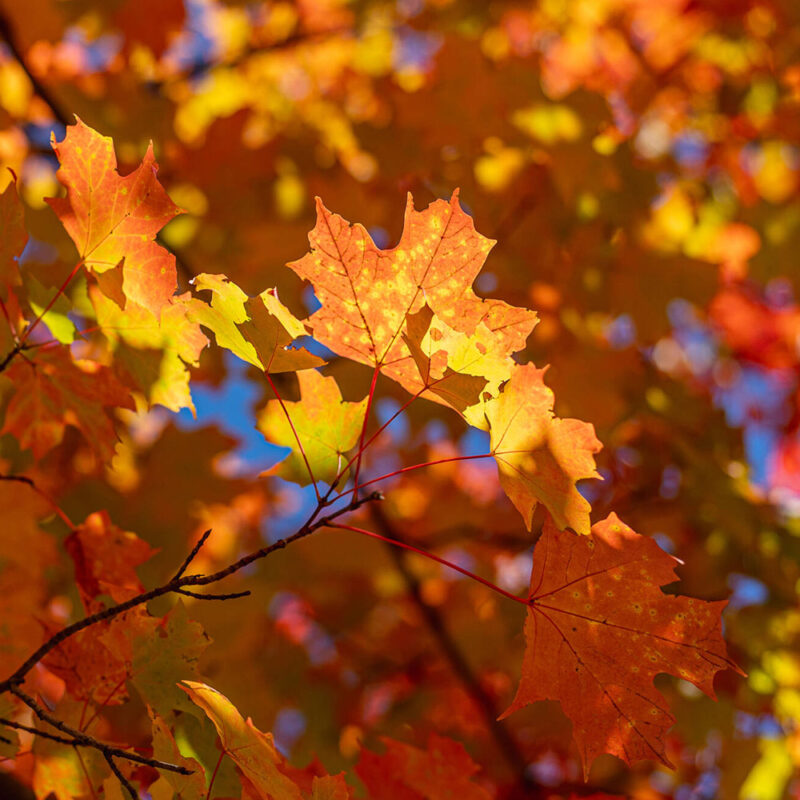
Trees that show early fall color include sugar maple (Acer saccharum), black tupelo (Nyssa sylvatica), dogwood (Cornus florida), and sassafras (Sassafras albidum).
Mid-Season Trees
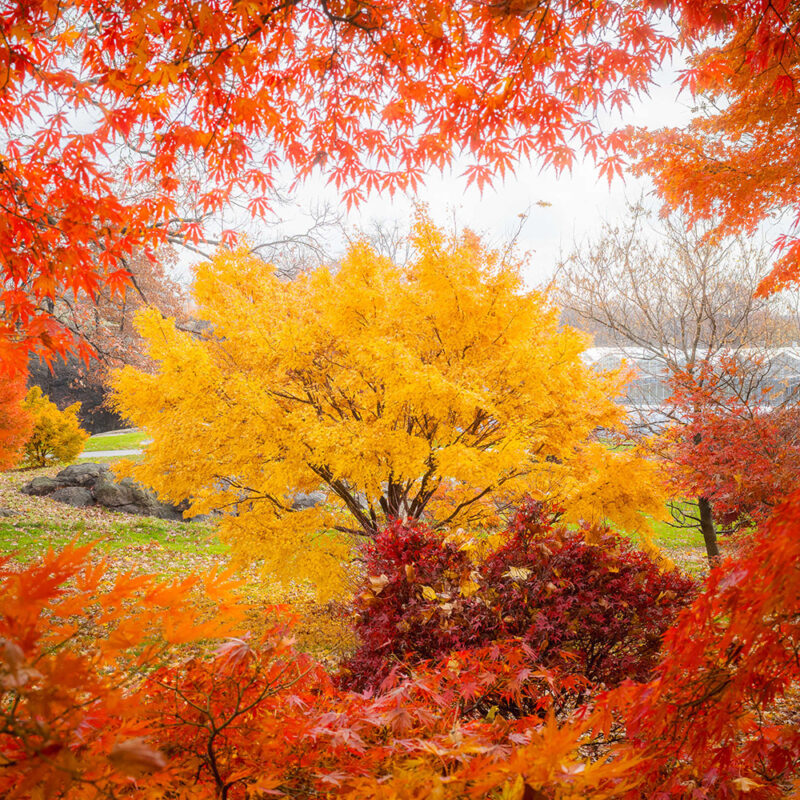
Trees that show fall color toward the middle of autumn include sweetgum (Liquidambar styraciflua), tulip tree (Liriodendron tulipifera), red maple (Acer rubrum), as well as many of the Japanese maple varieties (Acer palmatum).
Late Season Trees
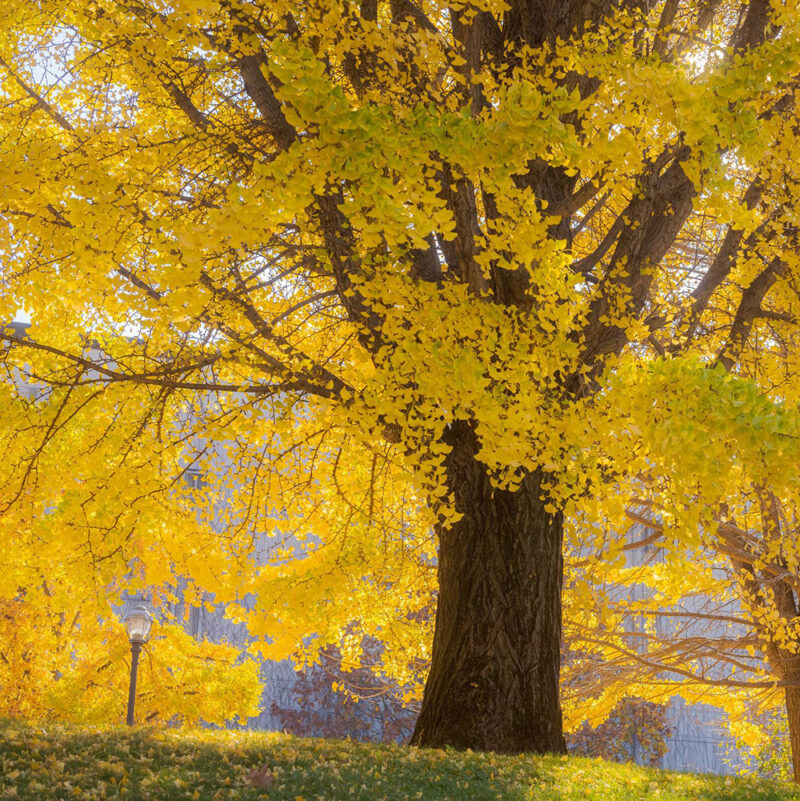
The last trees to transition to fall color include our native oaks, such as red oak (Quercus rubra) and scarlet oak (Quercus coccinea); ginkgo (Ginkgo biloba); and American beech (Fagus grandifolia).